|
Books Should Be Free Loyal Books Free Public Domain Audiobooks & eBook Downloads |
|
|
Books Should Be Free Loyal Books Free Public Domain Audiobooks & eBook Downloads |
|
Science |
|---|
|
Book type:
Sort by:
View by:
|
By: Mack Reynolds (1917-1983) | |
|---|---|
 Border, Breed Nor Birth
Border, Breed Nor Birth
| |
 Medal of Honor
Medal of Honor
| |
 Unborn Tomorrow
Unborn Tomorrow
| |
 Subversive
Subversive
| |
 Off Course
Off Course
| |
 Summit
Summit
| |
By: Margaret Warner Morley (1858-1923) | |
|---|---|
 The Insect Folk
The Insect Folk
Through delightful outings with her students, a teacher introduces her class to the fascinating world of insects. She encourages her students to observe and ask questions. This is a wonderful science text for young children. | |
 The Renewal of Life; How and When to Tell the Story to the Young
The Renewal of Life; How and When to Tell the Story to the Young
| |
By: Edmond Hamilton | |
|---|---|
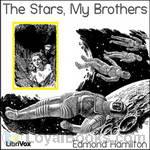 The Stars, My Brothers
The Stars, My Brothers
Edmond Hamilton (1904 – 1977) had a career that began as a regular and frequent contributor to Weird Tales magazine. The first hardcover publication of Science Fiction stories was a Hamilton compilation, and he and E.E. “Doc” Smith are credited with the creation of the Space Opera type of story. He worked for DC Comics authoring many stories for their Superman and Batman characters. Hamilton was also married to fellow author Leigh Brackett. – Published in the May, 1962 issue of Amazing Stories “The Stars, My Brothers” gives us a re-animated astronaut plucked from a century in the past and presented with an alien world where the line between humans and animals is blurred. | |
 The Man Who Saw the Future
The Man Who Saw the Future
| |
 The Sargasso of Space
The Sargasso of Space
| |
By: Robert Sheckley (1928-2005) | |
|---|---|
 The Status Civilization
The Status Civilization
Will Barrent awakes without memories just before being deposited on Omega, a planet for criminals where the average life expectancy is 3 years. He’s listed as a murderer and released into the illicit society as a “peon” the lowest class imaginable. A mysterious girl gives him a weapon that starts him on his path to status, a path that requires constant brutality. But it must be borne if our hero is to discover the reason for his imprisonment; A reason that pits him against himself, and involves the sardonically similar but devoutly different creeds of Omega and Earth... | |
 Watchbird
Watchbird
3 Robert Sheckley short stories that demonstrate the breathof his fantastic imagination. In Watchbird, the question "can machines solve human problems?" is answered with a resounding YES! But there may be a few unforeseen glitches. Just a few. Warrior Race drops us into an alien race of warriors who fight in a way you will never be able to imagine until you listen. And Beside Still Waters is a gentle story that shows us a man who really wants to get away from it all ... sitting on a rock in the asteroid belt with only a robot for a friend. No girls allowed! A poignant and unsettling story to say the least. | |
 Warrior Race
Warrior Race
| |
 Beside Still Waters
Beside Still Waters
| |
 Forever
Forever
| |
 Cost of Living
Cost of Living
| |
 Death Wish
Death Wish
| |
 The Hour of Battle
The Hour of Battle
| |
 The Leech
The Leech
| |
By: Jackson Gregory (1882-1943) | |
|---|---|
 Daughter of the Sun A Tale of Adventure
Daughter of the Sun A Tale of Adventure
| |
By: Ben Bova (1932-) | |
|---|---|
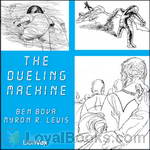 The Dueling Machine
The Dueling Machine
The Dueling Machine is the solution to settling disputes without injury. After you and your opponent select weapons and environments you are injected into an artificial reality where you fight to the virtual death… but no one actually gets hurt. That is, until a warrior from the Kerak Empire figures a way to execute real-world killings from within the machine. Now its inventor Dr. Leoh has to prevent his machine from becoming a tool of conquest. – The Dueling Machine, written with Myron R. Lewis, first appeared in the May, 1963 issue of Analog Science Fact & Fiction. | |
 The Next Logical Step
The Next Logical Step
| |
By: E. E. “Doc” Smith (1890-1965) | |
|---|---|
 Triplanetary, First in the Lensman Series
Triplanetary, First in the Lensman Series
Triplanetary was first serialized in Amazing Stories in 1934. After the Lensman series became popular, Smith took his Triplanetary story and turned it into the first of the Lensman series, using it as a prequel to give the back story for the protaganists in the Lensmen series. He added 6 new chapters, doubling it in size and it's really a different book from the serialized novel, being published 14 years after the first. It was put into Gutenberg just last year. The novel covers several episodes in an eons-long eugenics project of the super-intelligences of the Arisia... | |
By: E. E. Smith (1890-1965) | |
|---|---|
 Subspace Survivors
Subspace Survivors
A team of space travelers are caught in a subspace accident which, up to now, no one has ever survived. But some of the survivors of the Procyon are not ordinary travelers. Their psi abilities allow them to see things before they happen. But will it be enough?Smith's story "Subspace Survivors" first appeared in the July 1960 issue of the magazine Astounding. | |
 Galaxy Primes
Galaxy Primes
They were four of the greatest minds in the Universe: Two men, two women, lost in an experimental spaceship billions of parsecs from home. And as they mentally charted the Cosmos to find their way back to earth, their own loves and hates were as startling as the worlds they encountered. | |
By: Titus Lucretius Carus (94? BC - 49? BC) | |
|---|---|
 On the Nature of Things
On the Nature of Things
Written in the first century b.C., On the Nature of Things (in Latin, "De Rerum Natura") is a poem in six books that aims at explaining the Epicurean philosophy to the Roman audience. Among digressions about the importance of philosophy in men's life and praises of Epicurus, Lucretius created a solid treatise on the atomic theory, the falseness of religion and many kinds of natural phenomena. With no harm to his philosophical scope, the author composed a didactic poem of epic flavor, of which the imagery and style are highly praised. | |
By: Poul Anderson (1926-2001) | |
|---|---|
 Security
Security
“Security”, tells the story of a compartmentalized government physicist ordered by secret police to complete experiments aimed at developing a new weapon. He is brought to a hidden space station and put in charge of the project but there are many questions. In a world of spies watching spies it’s sometimes hard to know what’s patriotic. -- Poul Anderson was a Golden Age Science Fiction and Fantasy author. “Security” first appeared in the magazine “Space Science Fiction” in February of 1953 | |
By: Victor Appleton | |
|---|---|
 Tom Swift and His Submarine Boat, or, under the Ocean for Sunken Treasure
Tom Swift and His Submarine Boat, or, under the Ocean for Sunken Treasure
| |
 Tom Swift and His Sky Racer
Tom Swift and His Sky Racer
A $10,000 prize lures Tom into competing at a local aviation meet at Eagle Park. Tom is determined to build the fastest plane around, but his plans mysteriously disappear, which means Tom must redesign his new airplane from the beginning. | |
By: Ray Cummings (1887-1957) | |
|---|---|
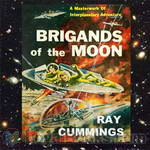 Brigands of the Moon
Brigands of the Moon
Gregg Haljan was aware that there was a certain danger in having the giant spaceship Planetara stop off at the moon to pick up Grantline’s special cargo of moon ore. For that rare metal — invaluable in keeping Earth’s technology running — was the target of many greedy eyes. But nevertheless he hadn’t figured on the special twist the clever Martian brigands would use. So when he found both the ship and himself suddenly in their hands, he knew that there was only one way in which he could hope to save that cargo and his own secret — that would be by turning space-pirate himself and paying the Brigands of the Moon back in their own interplanetary coin. (From the Gutenberg e-text) | |
 The Girl in the Golden Atom
The Girl in the Golden Atom
While examining a golden ring under a microscope, a chemist discovers a sub-atomic world. During his examination of this world he sees a beautiful young girl. After developing chemicals that will allow him to either shrink or grow larger in size, he and three friends journey to this small world. | |
 Fire People
Fire People
In effect Professor Newland declared that the curious astronomical phenomena of the previous November--the new "stars" observed, the two meteors that had fallen with their red and green light-fire--were all evidence of the existence of intelligent life on the planet Mercury. (An excerpt from chapter 1. ) | |
 Wandl the Invader
Wandl the Invader
There were nine major planets in the Solar System and it was within their boundaries that man first set up interplanetary commerce and began trading with the ancient Martian civilization. And then they discovered a tenth planet--a maverick! This tenth world, if it had an orbit, had a strange one, for it was heading inwards from interstellar space, heading close to the Earth-Mars spaceways, upsetting astronautic calculations and raising turmoil on the two inhabited worlds. But even so none suspected then just how much trouble this new world would make... | |
 The White Invaders
The White Invaders
| |
 Tarrano the Conqueror
Tarrano the Conqueror
In "Tarrano the Conqueror" is presented a tale of the year 2430 A.D.--a time somewhat farther beyond our present-day era than we are beyond Columbus' discovery of America. My desire has been to create for you the impression that you have suddenly been plunged forward into that time--to give you the feeling Columbus might have had could he have read a novel of our present-day life. To this end I have conceived myself a writer of that future time, addressing his contemporary public. You are to imagine... | |
By: Havelock Ellis (1859-1939) | |
|---|---|
 Studies in the Psychology of Sex, Volume One
Studies in the Psychology of Sex, Volume One
The first of six volumes, this volume covers in extensive detail the topics of "The Evolution of Modesty", "The Phenomena of Sexual Periodicity", and "Auto-Eroticism". Written as an anthropological and psychological study from the point of view of Havelock, the famous British sexologist of the late 19th century, who was also a physician and social reformer. | |
 Essays in War-Time Further Studies in the Task of Social Hygiene
Essays in War-Time Further Studies in the Task of Social Hygiene
| |
 The Task of Social Hygiene
The Task of Social Hygiene
| |
By: Fabian Franklin | |
|---|---|
 What Prohibition Has Done to America
What Prohibition Has Done to America
In What Prohibition Has Done to America, Fabian Franklin presents a concise but forceful argument against the Eighteenth Amendment of the U.S. Constitution. Beginning in 1920, this Amendment prohibited the sale and manufacture of alcoholic beverages in the United States, until it was repealed in 1933. Franklin contends that the Amendment “is not only a crime against the Constitution of the United States, and not only a crime against the whole spirit of our Federal system, but a crime against the first principles of rational government... | |
By: Antonio Colmenero de Ledesma (d. 17th century) | |
|---|---|
 Chocolate: or, An Indian Drinke
Chocolate: or, An Indian Drinke
The Author sings the praises of Chocolate. “By the wise and Moderate use whereof, Health is preserved, Sicknesse Diverted, and Cured, especially the Plague of the Guts; vulgarly called _The New Disease_; Fluxes, Consumptions, & Coughs of the Lungs, with sundry other desperate Diseases. By it also, Conception is Caused, the Birth Hastened and facilitated, Beauty Gain’d and continued.” | |
By: James Blish (1921-1975) | |
|---|---|
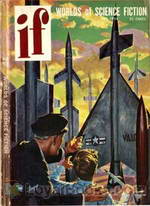 The Thing in the Attic
The Thing in the Attic
Honath the Pursemaker is a heretic. He doesn’t believe the stories in the Book of Laws which claims giants created his tree-dwelling race. He makes his opinion known and is banished with his infidel friends to the floor of the jungle where dangers abound. Perhaps he’ll find some truth down there. – The Thing in the Attic is one of Blish’s Pantropy tales and was first published in the July, 1954 edition of If, Worlds of Science Fiction magazine. | |
 One-Shot
One-Shot
| |
By: Frederik Pohl | |
|---|---|
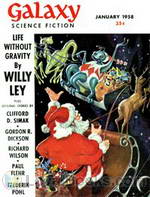 The Knights of Arthur
The Knights of Arthur
Sailors Sam Dunlap and Arthur check in to a New York hotel to await their mate Vern Engdahl when a girl shows up proposing to purchase Arthur. They need guys like Arthur to help run the city, and the fact that he fits in a small suitcase is even better. – The Knights of Arthur was first published in the January 1958 edition of Galaxy Science Fiction magazine. | |
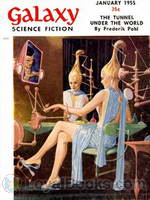 Tunnel Under The World
Tunnel Under The World
This famous Pohl story explores cybernetic robots and implanted personalities in a way that certainly expanded my way of looking at reality. Is that wall really real? or is it just kinda, sorta real? And who am I? The protagonist, Guy Burckhardt, wakes up screaming from a horrible dream of explosions, searing fire, choking gas and other terrible ways to die. But he wakes up so it must have been just a bad nightmare, right? To find out that piece of information you will need to listen to this inventive and scary story. | |
 The Day of the Boomer Dukes
The Day of the Boomer Dukes
| |
 The Hated
The Hated
| |
 Pythias
Pythias
| |
By: James Schmitz (1911-1981) | |
|---|---|
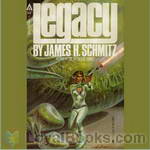 Legacy
Legacy
Ancient living machines that after millennia of stillness suddenly begin to move under their own power, for reasons that remain a mystery to men. Holati Tate discovered them—then disappeared. Trigger Argee was his closest associate—she means to find him. She's brilliant, beautiful, and skilled in every known martial art. She's worth plenty—dead or alive—to more than one faction in this obscure battle. And she's beginning to have a chilling notion that the long-vanished Masters of the Old Galaxy were wise when they exiled the plasmoids to the most distant and isolated world they knew.... | |
By: Robert Millikan (1868-1953) | |
|---|---|
 On the Elementary Electrical Charge
On the Elementary Electrical Charge
The experiments herewith reported were undertaken with the view of introducing certain improvements into the oil-drop method of determining e and N and thus obtaining a higher accuracy than had before been possible in the evaluation of these most fundamental constants. From the Physical Review, Vol. II, No. 2 | |
By: Florence Nightingale (1820-1910) | |
|---|---|
 Notes on Nursing
Notes on Nursing
Notes on Nursing was published in 1859 and is a fascinating view into the theories underpinning the early development of modern nursing and public health reform by "the Lady with the Lamp", Florence Nightingale. Emphasising common sense and thought for the patient's care in many more ways than just administering physician-prescribed medicines, this is still a very relevant book for those interested in health or caring for the sick and infirm today.Summary by Cori Samuel. | |
 Notes on Nursing What It Is, and What It Is Not
Notes on Nursing What It Is, and What It Is Not
| |
By: Clifford D. Simak (1904-1988) | |
|---|---|
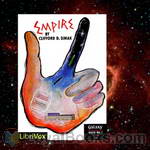 Empire
Empire
In a future time, the solar system is powered by one energy source, controlled by one huge organisation, which has plans to use this control to dominate the planets. Unknown to them, a couple of maverick scientists accidentally develop a completely new form of energy supply and threaten the corporation's monopoly. Naturally, the corporation can't allow this to happen... A stunning story about the manipulation of pure energy, climaxing in interstellar conflict. | |
By: Clifford Simak (1904-1988) | |
|---|---|
 Hellhounds of the Cosmos
Hellhounds of the Cosmos
From Astounding Stories of 1932. Earth is being attacked by horrible black monsters that appear from nowhere and destroy and kill everything and everyone in their paths. Nothing affects them, nothing stops them; they are impervious to all weapons. Earth is doomed. But there is one hope and it rests on the shoulders of 98 brave men. Can they do it? can they find a way of retaliating? Listen and find out. | |
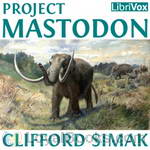 Project Mastodon
Project Mastodon
Clifford Simak deals with the implications of time travel in his own unique way in this story. What if a group of guys did it on their own, without any help from government or industry? On a shoestring,so to speak? Would anyone believe them? What would you do if you could go back 150,000 years to a time when mastodons and saber toothed tigers roamed North America? And what happens when they run out of money? All these questions are explored in the usual humorous, wry Simak way in this story. | |
By: Clifford D. Simak (1904-1988) | |
|---|---|
 The Street That Wasn't There
The Street That Wasn't There
| |
By: Isaac Newton (1642-1727) | |
|---|---|
 Opticks
Opticks
The famous physicist Sir Isaac Newton lectured on optics from 1670 - 1672. He worked on the refraction of light into colored beams using prisms and discovered chromatic aberration. He also postulated the corpuscular form of light and an ether to transmit forces between the corpuscles. His "Opticks", first published 1704 contains his postulates about the topic. This is the fourth edition in English, from 1730, which Newton corrected from the third edition before his death. | |
By: Thomas R. Malthus (1766-1834) | |
|---|---|
 An Essay on the Principle of Population
An Essay on the Principle of Population
The power of population is indefinitely greater than the power in the earth to produce subsistence for man. Population, when unchecked, increases in a geometrical ratio. Subsistence increases only in an arithmetical ratio. A slight acquaintance with numbers will show the immensity of the first power in comparison with the second (Malthus). | |
By: William Harmon Norton (1856-1944) | |
|---|---|
 The Elements of Geology
The Elements of Geology
Geology is a science of such rapid growth that no apology is expected when from time to time a new text-book is added to those already in the field. The present work, however, is the outcome of the need of a text-book of very simple outline, in which causes and their consequences should be knit together as closely as possible,—a need long felt by the author in his teaching, and perhaps by other teachers also. The author has ventured, therefore, to depart from the common usage which subdivides... | |
By: Fritz Leiber (1910-1992) | |
|---|---|
 The Creature from Cleveland Depths
The Creature from Cleveland Depths
“The Creature from Cleveland Depths” also known as “The Lone Wolf” tells the story of a writer and his wife who refuse to move below-ground after the cold-war gets hot. The underground society discovers a decline in their ability to creatively innovate, and must consult with surface dwellers to develop products that satiate the needs of a people living like moles. But the latest product to result from this alliance, “The Tickler” has frightening implications that only our heroes seem to notice. – This story appeared in the December, 1962 issue of “Galaxy” magazine. | |